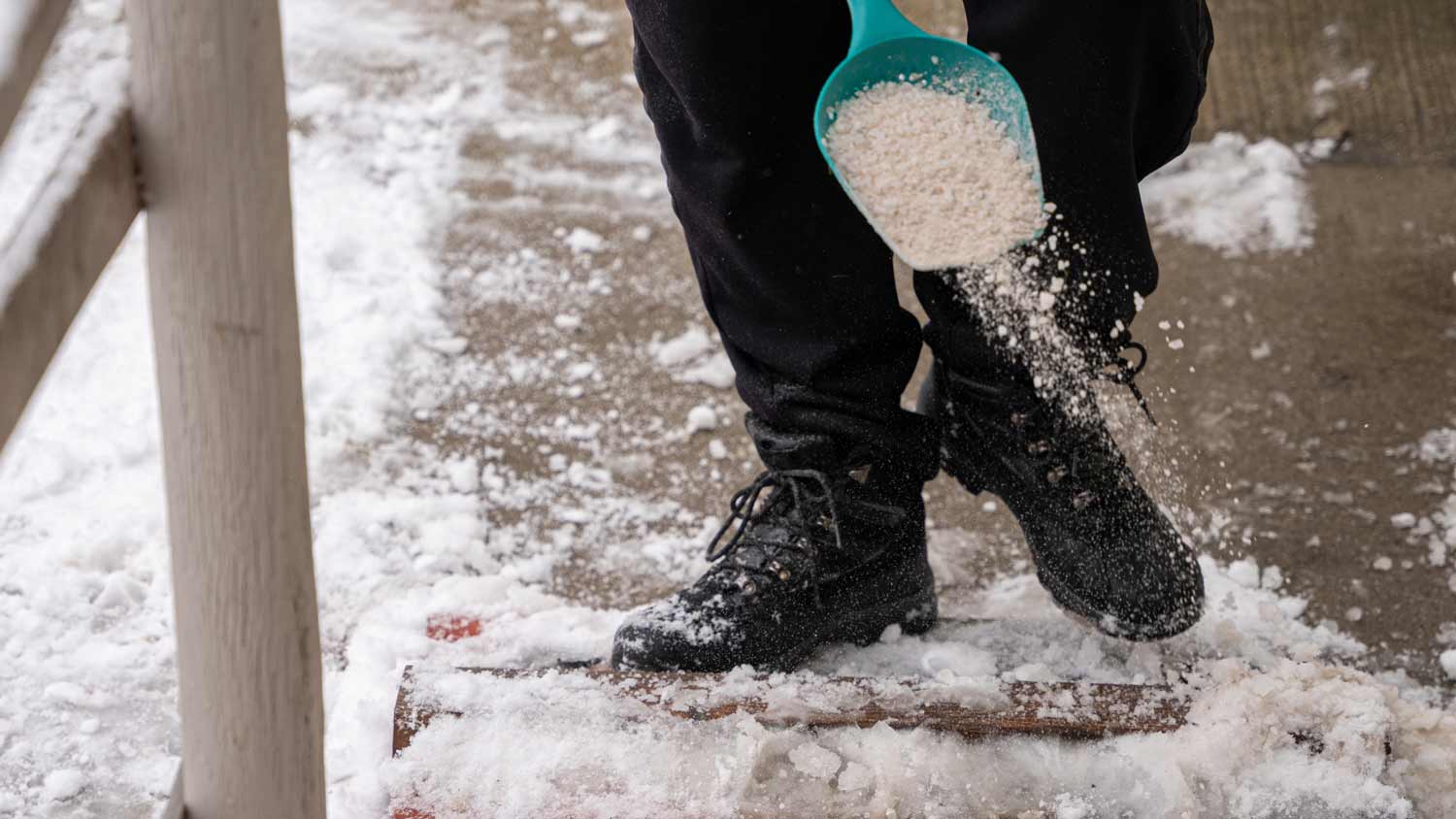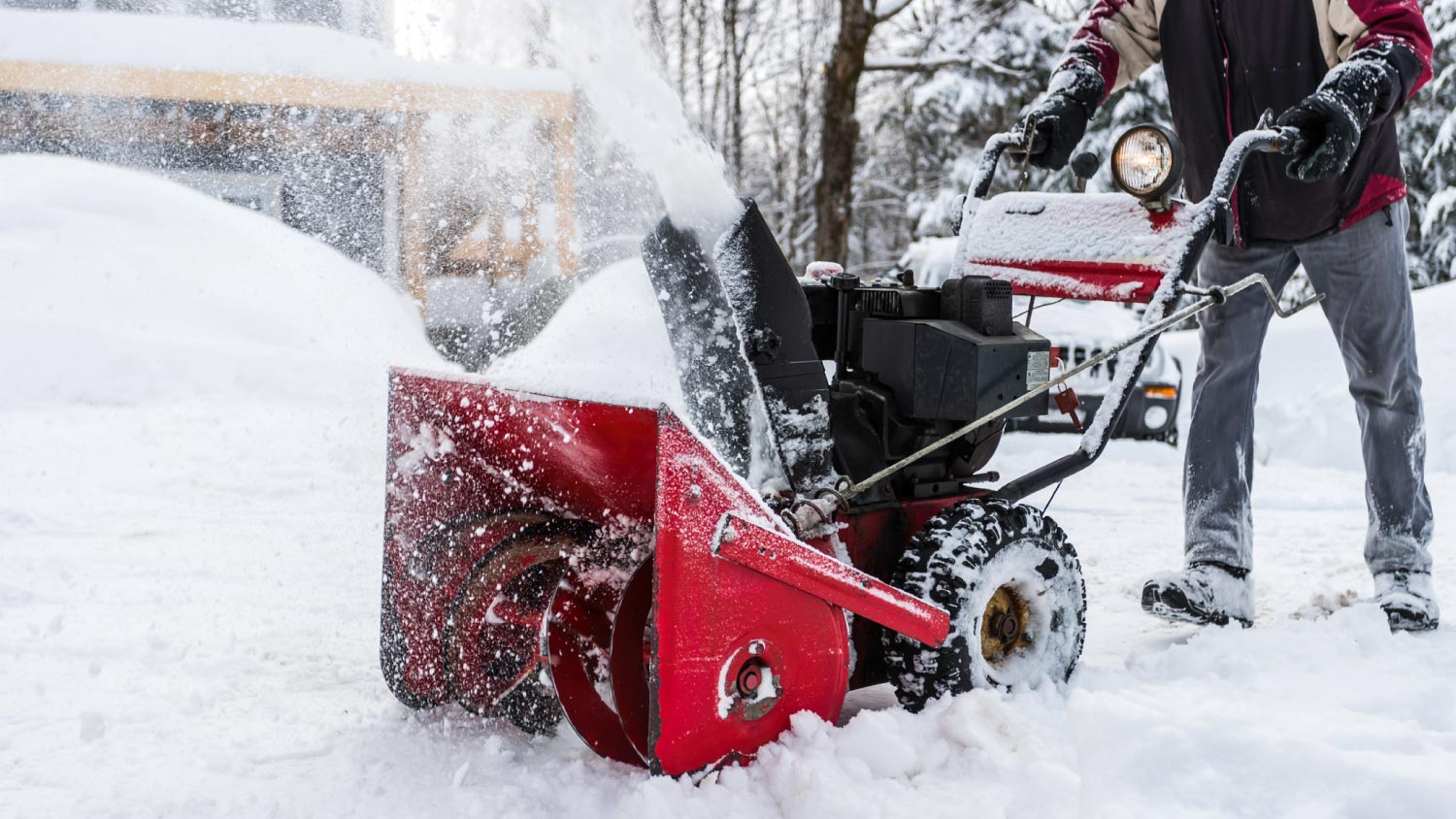
Discover the cost to install snow guards. Learn about average prices, key cost factors, and tips to save on your snow guard installation project.
Here’s a right and wrong way to tackle this winter task


With every winter wonderland comes the inevitable need to leave your cozy home and brave the elements with your shovel. Unless you’re in the mood for a good workout, the process can feel taxing and time-consuming. Plus, if you aren’t mindful of icy surfaces or proper technique, shoveling can even be hazardous. Before you venture out into the tundra this winter, follow these ten tips to learn how to shovel snow safely and efficiently.
It’s tempting to simply throw on your parka and head out the door after a major snowfall—after all, the quicker you start, the quicker you can be back inside enjoying a hot beverage. However, you’ll be making the process far more uncomfortable than it needs to be. Instead, always layer your clothing to trap warmth, and opt for moisture-wicking fabrics to keep sweat away from your skin. Don't forget to wear a warm hat, thick gloves, and insulated waterproof boots with good traction to prevent slipping on icy surfaces.

Budget-friendly shovels aren’t always the best snow removal tools—they’re often straight, flimsy, and prone to breaking. Rather than going for the lowest price tag, opt for an ergonomic shovel that is designed with user comfort in mind. These feature innovative shapes to make lifting easier, making them ideal for individuals with back, neck, or arm mobility concerns.
If you need to clear a large area quickly, consider pusher or wide shovels, which are primarily for pushing snow aside rather than lifting it. Keep a standard shovel handy for areas where pushing isn't practical.
Shoveling snow can be quite a workout, and it should be treated as such. Just as you would before a session of weight lifting, it's essential to warm up your muscles before you start. Do some light stretching exercises to loosen your muscles, focusing on your back, shoulders, and legs. This can help reduce the risk of strain or injury while shoveling.
Snow and ice go hand-in-hand, and the latter can cause you to slip and fall before you have time to react. Always be aware of your surroundings and step cautiously to avoid being caught off guard by ice. If you need to stand on slippery areas, cover them with salt, kitty litter, or sand for added traction.

Lifting snow with your shovel is just like lifting any heavy object, so it’s important to maintain a good posture and use proper lifting techniques. Keep your back straight and stand with your feet at shoulder-width for stability, bending at the knees instead of the waist or back. Hold the shovel close to your body instead of fully extending your arms, and turn your whole body rather than twisting your spine. As you lift heavy loads of snow, engage your abdominal muscles and lift with your legs instead of your back.
Shoveling snow is hard work, and it’s important to allow yourself to take breaks when you need them. A tired body is more likely to neglect proper technique and sustain injury, so it’s not worth over-exerting yourself to get the job done quickly. If possible, enlist the help of your family members or neighbors (or better yet, someone with a snow thrower or a snow blower).

It's generally easier to shovel a few inches of snow at a time rather than waiting for a massive accumulation. If possible, start shoveling while it's still snowing to prevent heavy buildup. At the very least, shovel before the area gets driven or walked on, as this can compact the snow and make it more challenging to shovel.
If a shovel makes you feel ill-equipped to handle the snow around your property, it could be time to invest in an upgrade. Snow throwers and snow blowers do most of the work for you, so they’re worth considering if it’s within your budget. After your initial purchase, you’ll only need to worry about how to start a snowblower and maneuver it around to get the whole area cleared in record time.

Breaking up thick ice with your shovel is exhausting and dangerous, and leaving icy areas intact creates a serious slip-and-fall hazard. Instead, invest in a hefty bag of ice melt to spread and melt the ice while you wait. Follow the manufacturer’s instructions and spread the ice melt around 30 minutes before you shovel to take care of tough ice.
If shoveling feels like too tall of a task, you’re not alone, and there’s always the option of seeking professional help from a local snow removal service. Many contractors will charge by the season, so you won’t have to worry about braving the cold for the remainder of winter. The average annual snow removal contract costs between $350 to $450, but costs can vary based on the size of the property and the average snowfall in your area.
From average costs to expert advice, get all the answers you need to get your job done.

Discover the cost to install snow guards. Learn about average prices, key cost factors, and tips to save on your snow guard installation project.

Get the latest snow removal cost estimates, including average prices, key cost factors, and tips to help homeowners budget for safe, efficient snow removal.

Snow throwers and snow blowers are often named interchangeably, but they aren’t the same. Learn the main differences between a snow thrower vs. snow blower.

Use our guide to learn how to use a snowblower so that your driveway, sidewalk, and front entry are hazard-free throughout the winter.

If snow melts in your yard, but the grass is still covered in patches of white, you may have snow mold. Learn how to get rid of snow mold with this guide.

There are several ways to melt ice on driveways, including with and without salt. Read this tutorial on how to melt ice on driveways to get started.